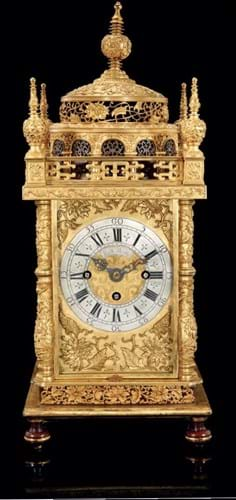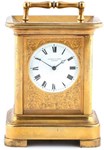The market for these is rather different and reflects the ongoing collector interest in rare Chinese items rather than simply horology.
Nonetheless, they tell an interesting story about the history of mechanical clockmaking in Qing dynasty China.
Despite the fascination with the clocks and automata known locally as ‘sing songs’, most pieces in a vast collection assembled by the emperors Kangxi and Qianlong were European made.
London clockmakers such as John Mottram in the late 18th century created highly ornate clocks for the ‘Chinese market’ often featuring elaborate cases, musical trains, and automaton.
However, from the late 17th century the Chinese also created their own clocks – typically copies – in the imperial workshops.
Christie’s clock was an imperial ormolu quarter-striking table clock, from the palace clock workshops, dated to the Qianlong period (1736-95). Standing at 22in (55cm) high, the case is similar in style to Augsburg table clocks of the 16th and 17th centuries. The movement employs three plates, rather than the two typically seen with European clocks, to house the motion work.
Offered at Christie’s Exceptional Sale on July 6, the clock achieved a hammer price of £340,000 against a £300,000-500,000 guide.
Fine tribute
Over at Bonhams on July 13, a late 18th century Chinese imperial tribute paste-set ormolu and white marble quarter striking table clock came up for sale.
Standing at 2ft (68cm), the movement, pendulum, and dial swing horizontally ‘as one’ in the centre of a double gourd frame.
The reference to ‘tribute’ in the cataloguing reflected that, while the clock was Chinese, it was probably made outside the imperial workshops.
The clock was subject to strong bidding and eventually sold at £180,000, well clear of the estimate of £40,000-60,000.















